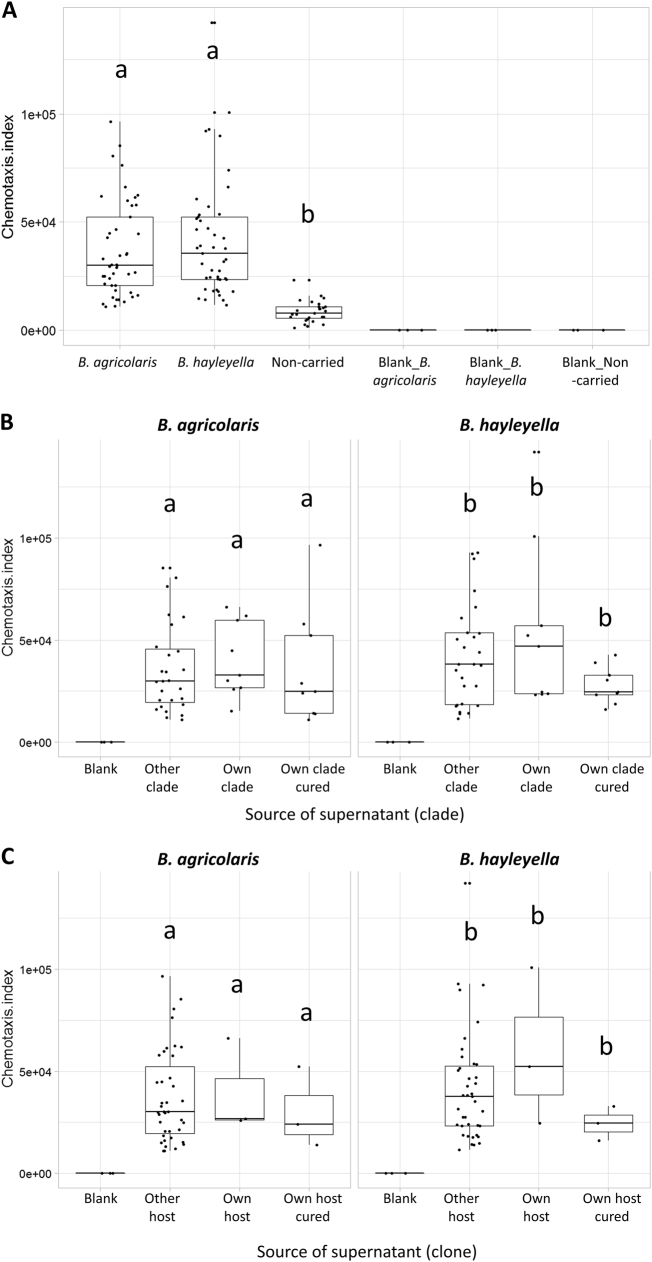Fig. 3.
Carried Burkholderia are more attracted to D. discoideum secretions than are non-carried Burkholderia, but they do not prefer hosts of their own clones or species. To investigate how specific these chemotactic responses are and whether carried Burkholderia would prefer their original hosts, we studied host preferences at three different levels. The figure shows mean ± SEs of chemotactic responses. a Carried Burkholderia were more attracted to D. discoideum secretions (from all clones) than non-carried Burkholderia. b B. hayleyella and B. agricolaris did not prefer hosts of their own species. c Each Burkholderia clone did not prefer its own host clone. Significant differences in chemotactic responses are indicated by different letters, which represent results of one-way nested ANOVA test and followed by a post-hoc Tukey’s honestly significantly different (HSD) test. Letters apply within panel (a), (b) and (c). For panels (b) and (c), letters apply within B. hayleyella and B. agricolaris

